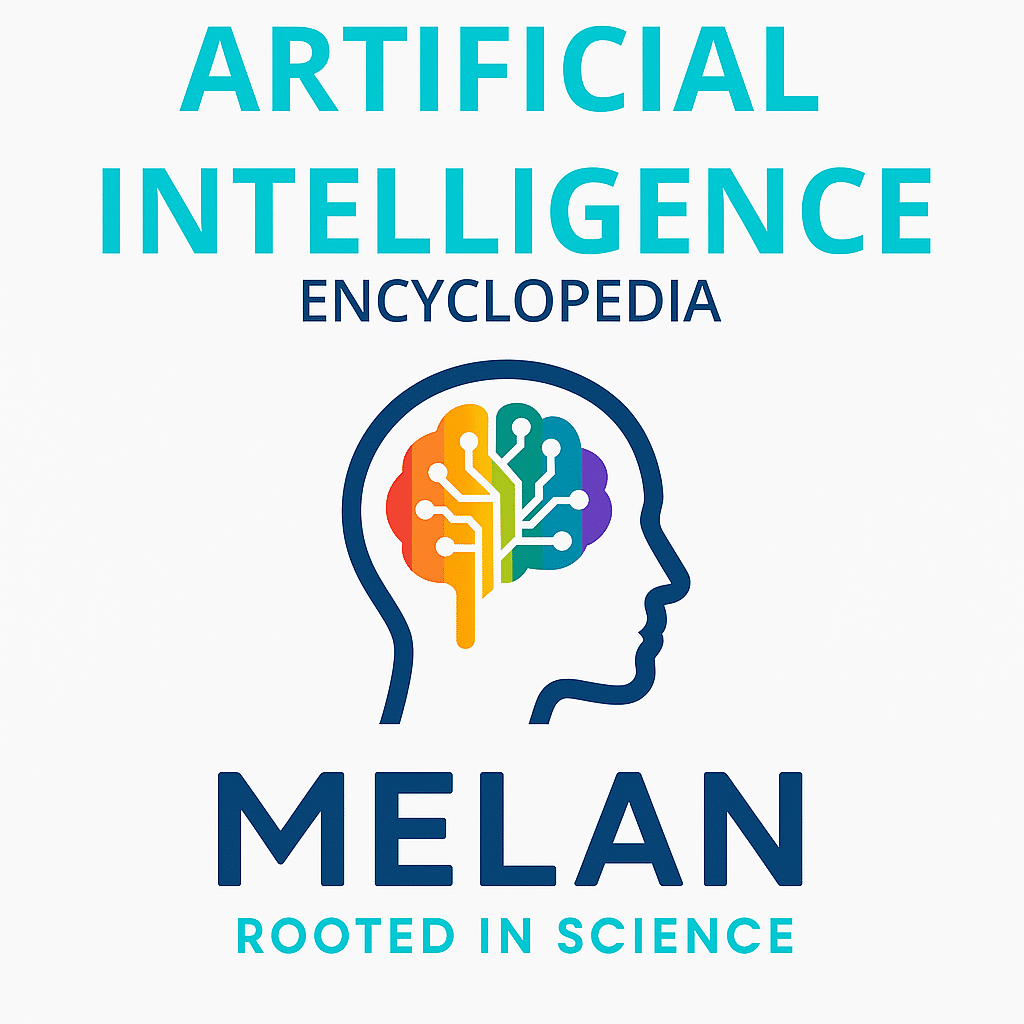European Union Artificial Intelligence Act (EU AI) refers to the world’s first comprehensive legal framework regulating artificial intelligence systems, establishing risk-based rules for AI development, deployment, and use across all EU member states. This landmark legislation categorizes AI applications by risk level and imposes strict requirements for high-risk systems, including transparency obligations, human oversight mandates, and significant penalties for violations, fundamentally reshaping how AI technology is developed and used globally.
European Union Artificial Intelligence Act
|
|
|---|---|
| Category | Legal Framework, Technology Regulation |
| Subfield | AI Governance, Digital Rights, Technology Policy |
| Risk Categories | Prohibited, High-Risk, Limited Risk, Minimal Risk |
| Enforcement Date | August 1, 2024 (phased implementation) |
| Maximum Penalties | €35 million or 7% of global annual turnover |
| Sources: Official EU AI Act Text, EU Digital Strategy, AI Act Portal | |
Other Names
EU AI Act, Artificial Intelligence Act, AI Regulation, European AI Law, EU Regulation 2024/1689, Brussels Effect AI Law, Digital Single Market AI Rules
History and Development
The European Union began developing AI regulation in 2019 when the European Commission published ethics guidelines for trustworthy AI, followed by a white paper on AI policy in 2020. The formal legislative process started in April 2021 when the Commission proposed the EU AI Act as part of its digital strategy and response to growing concerns about AI’s impact on fundamental rights.
The proposal underwent extensive debate in the European Parliament and Council, with significant amendments addressing foundation models and generative AI following the rise of ChatGPT and similar systems. After two years of negotiations involving industry lobbying, civil society input, and member state discussions, the Act was formally adopted in May 2024 and entered into force on August 1, 2024, with phased implementation extending to 2027.
How the EU AI Act Works
The EU AI Act operates through a risk-based regulatory framework that categorizes AI systems into four main categories with corresponding requirements. Prohibited AI practices are banned outright, including social scoring systems and real-time facial recognition in public spaces with limited exceptions. High-risk AI systems must undergo conformity assessments, maintain detailed documentation, ensure human oversight, and meet accuracy and robustness standards before market entry.
Limited risk systems like chatbots must inform users they are interacting with AI. The law applies to AI providers placing systems on the EU market, importers, distributors, and deployers regardless of where they are established, creating global compliance requirements for companies serving EU customers.
Variations of AI Regulation
Prohibited AI Systems
AI applications that are completely banned including subliminal manipulation, social scoring by governments, real-time facial recognition in public spaces (with narrow exceptions), and emotion recognition in workplaces and schools, reflecting fundamental rights protections.
High-Risk AI Applications
Systems requiring strict compliance including AI used in critical infrastructure, education, employment, law enforcement, migration control, and healthcare, subject to conformity assessments, risk management, and ongoing monitoring requirements.
Foundation Model Requirements
Special obligations for large-scale AI models like GPT-4 and Claude, including systemic risk assessments, cybersecurity measures, energy consumption reporting, and cooperation with regulatory authorities for models exceeding computational thresholds.
Real-World Applications
The EU AI Act affects AI systems used in hiring and employee monitoring, requiring companies to ensure fairness and transparency in algorithmic decision-making processes. Healthcare AI applications must meet strict safety and effectiveness standards, including medical diagnostic systems and treatment recommendation tools. Educational technology using AI for student assessment or personalized learning must comply with child protection and non-discrimination requirements. Law enforcement agencies face restrictions on AI use for predictive policing, facial recognition, and automated decision-making in criminal justice. Financial institutions must ensure AI systems for credit scoring and fraud detection meet accuracy and fairness standards while providing explainable decisions to affected individuals.
EU AI Act Benefits
The EU AI Act provides legal certainty for businesses developing AI systems by establishing clear requirements and compliance pathways, reducing regulatory uncertainty that has hindered investment and innovation. It protects fundamental rights by requiring human oversight, transparency, and fairness in high-risk AI applications, preventing discriminatory outcomes and preserving human dignity. The regulation creates competitive advantages for compliant companies by establishing trust with consumers and creating barriers for non-compliant competitors. It harmonizes AI governance across EU member states, eliminating conflicting national regulations and creating a unified market for AI technologies. The Act’s global reach influences international AI governance standards, as companies worldwide must comply to access the EU market.
Risks and Limitations
Implementation Complexity and Compliance Costs
The EU AI Act’s complex risk assessment framework creates significant compliance burdens for companies, particularly smaller organizations that lack resources for legal analysis and technical implementation. Determining which risk category applies to specific AI systems often requires expensive legal consultation and technical expertise. The phased implementation timeline creates uncertainty as different requirements take effect at different times, making compliance planning challenging.
Innovation and Competitiveness Concerns
Critics argue the regulation could stifle European AI innovation by imposing bureaucratic requirements that delay product development and increase costs compared to less regulated markets like the United States and China. The restrictions on certain AI applications may prevent beneficial uses, such as limiting facial recognition technology that could help find missing children or prevent terrorism.
Enforcement Challenges and Jurisdictional Issues
The Act relies on member state authorities for enforcement, creating potential inconsistencies in interpretation and application across different countries. Cross-border enforcement remains complex when AI systems are developed outside the EU but used within it. The regulation faces challenges in keeping pace with rapidly evolving AI technology, as new AI capabilities may not fit neatly into existing risk categories.
Global Trade and Digital Sovereignty Tensions
The Act’s extraterritorial reach has created tensions with trading partners, particularly the United States and China, who argue it creates unfair barriers to market access. Tech companies have lobbied against strict requirements for foundation models, claiming they will advantage Chinese competitors who face fewer regulatory constraints. These regulatory changes stem from legal pressure following algorithmic bias cases in hiring and criminal justice, market demands from European citizens for trustworthy AI systems, reputation management after high-profile AI failures affecting fundamental rights, and investor concerns about regulatory risk and liability exposure.
Stakeholder Implementation and Market Impact
Technology companies, AI researchers, civil rights organizations, and EU member state governments drive implementation of the Act’s requirements, while business associations and trade groups influence enforcement guidance and technical standards. Consumer protection agencies, data protection authorities, and fundamental rights organizations monitor compliance and advocate for strong enforcement. The intended outcomes include protecting fundamental rights from AI-related harms, ensuring AI systems are safe and trustworthy, maintaining European values in AI development, and establishing the EU as a global leader in responsible AI governance.
Initial evidence shows increased corporate investment in AI governance and compliance programs, development of AI risk assessment frameworks, growing demand for AI auditing services, and early enforcement actions against non-compliant systems, though comprehensive impact assessment continues as implementation phases progress.
Current Debates
Foundation Model Regulation and Innovation Balance
Tech companies and researchers debate whether the Act’s requirements for large AI models like GPT-4 are too stringent and could drive AI development outside Europe. Some argue the computational thresholds for triggering obligations are too low and will catch smaller research models, while others contend they’re too high and miss potentially dangerous systems.
Real-Time Facial Recognition Exceptions
Law enforcement agencies and civil liberties groups clash over the narrow exceptions allowing real-time facial recognition for terrorism prevention and serious crime investigation. Police argue these exceptions are too restrictive for effective law enforcement, while privacy advocates warn that any exceptions create loopholes for surveillance expansion.
Global AI Governance Standards and Competition
Policymakers debate whether the EU’s approach will become the global standard for AI regulation or whether it will disadvantage European companies against competitors in less regulated markets. The “Brussels Effect” theory suggests EU rules will influence global practices, but critics worry about regulatory fragmentation.
Enforcement Consistency Across Member States
Legal experts and industry representatives express concerns about whether the 27 EU member states will interpret and enforce the Act consistently, potentially creating compliance challenges for companies operating across multiple European markets.
Artificial General Intelligence and Future-Proofing
Researchers and policymakers debate whether the Act adequately addresses potential risks from artificial general intelligence and superintelligent systems that don’t yet exist, with some arguing for more precautionary measures and others focusing on current AI capabilities.
Media Depictions of EU AI Act 2024
Movies
- The Circle (2017): Emma Watson’s character confronts a tech company’s surveillance practices, paralleling concerns about AI regulation and the need for oversight of powerful technology companies that the EU AI Act addresses
- Minority Report (2002): The PreCrime system represents the type of predictive AI that would face strict regulation under the Act’s high-risk category, exploring themes of algorithmic bias and human oversight
- I, Robot (2004): Will Smith’s character investigates AI systems that must follow safety protocols, similar to how the EU AI Act requires risk management and human oversight for high-risk AI applications
TV Shows
- Black Mirror: Episodes like “Nosedive” with social scoring systems directly depict AI applications that would be prohibited under the EU Act, while “Shut Up and Dance” shows AI surveillance that would require strict oversight
- Years and Years (2019): BBC series depicting near-future AI governance challenges in Europe, including regulatory responses to technological advancement and digital rights protection
- Next (2020): Explores uncontrolled AI development and the consequences of inadequate regulation, highlighting the type of risks the EU Act aims to prevent through oversight requirements
Books
- The Age of Surveillance Capitalism (2019) by Shoshana Zuboff: Analyzes the regulatory challenges that led to comprehensive AI legislation like the EU AI Act, examining how technology companies operate without adequate oversight
- Weapons of Math Destruction (2016) by Cathy O’Neil: Documents algorithmic bias and discrimination that the EU AI Act specifically aims to prevent through its high-risk system requirements
- AI 2041 (2021) by Kai-Fu Lee: Explores AI governance scenarios including regulatory frameworks similar to the EU Act and their impact on technological development and society
Games and Interactive Media
- Watch Dogs series (2014-present): Players navigate surveillance systems and AI-powered city infrastructure, demonstrating the type of AI applications that would require regulation under the EU Act’s framework
- Detroit: Become Human (2018): Explores AI rights and regulation in a future society, touching on themes of AI governance and legal frameworks that parallel real-world regulatory development
- Regulatory Simulation Games: Educational tools and policy simulations help stakeholders understand the EU AI Act’s requirements and practice compliance decision-making in various scenarios
Research Landscape
Current research focuses on developing technical standards and conformity assessment procedures for AI systems under the EU Act, including bias testing methodologies, risk assessment frameworks, and auditing protocols. Legal scholars analyze the Act’s interaction with existing EU laws like GDPR and its influence on global AI governance trends. Industry researchers work on compliance technologies including automated risk assessment tools, AI system documentation platforms, and monitoring solutions for ongoing compliance. Emerging research areas include AI governance for foundation models, international regulatory cooperation mechanisms, and enforcement strategies for cross-border AI systems.
Selected Publications
- AI Patents Block Life-Saving Drug Discovery
- What is Artificial Intelligence (AI)?
- 60 ChatGPT Prompts for Writing Ad Copy Fast
- What is Digital Marketing?
- Build a Powerful Content Marketing Strategy for Your Wellness Beauty Brand
- What is a “personal hardship” flag in Google Merchant Center?
- Mycorrhizal symbioses and tree diversity in global forest communities
- What is Schema Markup?
- SEO is Outdated, Optimize Your Website for AI
- Google Personal Hardship Alerts Get It Wrong and Mislabel Products
- New case law and liability risks for manufacturers of medical AI
- Stop Training Google to Steal Your Patients with 3rd-Party Analytics
- When Google Misunderstands Your Business and You Rank for Irrelevant Keywords
- Why Does AI Struggle with Context Cues in Language?
- Hello world!
Frequently Asked Questions
What exactly is the EU AI Act?
The EU AI Act is the world’s first comprehensive law regulating artificial intelligence, setting safety and transparency requirements for AI systems based on their risk level, with strict rules for high-risk applications and complete bans on some AI uses.
How does the EU AI Act affect companies outside Europe?
Any company that provides AI systems to EU customers must comply with the Act’s requirements, regardless of where the company is located, similar to how GDPR applies globally when processing EU residents’ data.
What AI applications are completely banned under the Act?
The Act prohibits AI systems for social scoring, subliminal manipulation, most real-time facial recognition in public spaces, and emotion recognition in workplaces and schools, with limited exceptions for law enforcement.
When do companies need to comply with the EU AI Act?
The Act has a phased implementation: prohibited AI systems were banned immediately in August 2024, while requirements for high-risk systems and foundation models take effect between 2025 and 2027.
What are the penalties for violating the EU AI Act?
Fines can reach €35 million or 7% of a company’s global annual revenue, whichever is higher, making it one of the most expensive technology regulations to violate, similar to GDPR penalty levels.


